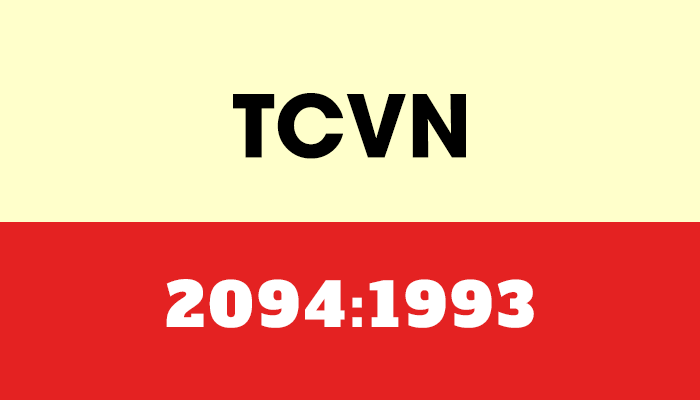VIETNAMESE STANDARDS TCVN 2094:1993
TCVN 2094:1993
PAINT
PAINT APPLICATION METHOD
1. Examination and preparation of test samples
Conducting according to TCVN 5669 - 1992
2. Standard plate for testing
Conducting according to TCVN 5670 - 1992
3. Paint application
Process the film on the standard sample prepared according to TCVN 5670 - 1992 by dipping, pouring, and using a brush or spraying machine.
3.1. Paint application by brush
Adjust the viscosity of the paint under test to achieve a sweepable viscosity. Use a bristle brush to apply a thin and even layer on the base. Move the brush quickly and evenly across the sample plate.
3.2. Paint application by injection machine
Adjust the viscosity of the paint to be tested so that it can be sprayed. Spray the paint in thin and regular layers until the thickness specified in the standard is reached and the spray paint should not flow horizontally - vertically on the sample plate. The spray direction must be perpendicular to the paint surface. When the diameter of the nozzle is 1.8 mm, the air pressure for spraying is 2.0 - 3.5 at, and the distance from the sprayer to the spray surface should not be less than 200mm. The sprayer's moving speed is less than 1m/s.
3.3. Paint application by pouring method.
Apply paint evenly over the surface of the sample plate. Tilt the poured sample plate at an angle of 450 to allow excess paint to flow. (Flow time depends on the technical conditions applied to the paint).
3.4. Paint application by dip method
Immerse the sample plate in the container of paint to be tested, then raise it slowly and hang it in an upright position to allow excess paint to flow and allow to dry.
4. Number of layers of paint in film processing
4.1. To determine the color and appearance of the paint, the paint film must be completely covered with the substrate so that the background is not visible by applying one or more layers. To determine the purity of the paint, the paint must be applied on a thin sheet in a single layer by the pouring method.
4.2. To determine the paint film's drying time, hardness, impact strength, and flexural strength, one coat must be applied.
4.3. To determine the resistance to water, grease, solvents, salts, acids, alkalis... must be scanned on both sides of the sample plate.
4.4. For the determination of atmospheric resistance, two coats of paint shall be applied to the surface of the specimen plate.
5. Single layer film processing mode.
5.1. For paints with a flow time (conventional viscosity) of 40 - 50s, use a paintbrush, and for paints with a flow time (conventional viscosity) of 25 - 30s, use a paint sprayer.
6. Multilayer paint processing mode
To process a multi-layer film, the first layer of paint must be dehydrated before applying the next layer. When necessary, use sandpaper to sand each coat of paint before applying the next layer.
In exceptional cases, the conditions may be changed according to the agreement between the relevant parties.
>> READ OTHERS TCVN <<
Contact
Office address: Floor 2-A2-IA20, Nam Thang Long Urban Area, Pham Van Dong Street,
Dong Ngac Ward, Bac Tu Liem District, Hanoi City, Vietnam
Research Center: Nhue hamlet - Kim Chung village - Dong Anh district - Hanoi - Viet Nam
Website: megaradcenter.com
Tel/Fax: (+84) 24 375 89089 / (+84) 24 375 89098
Email: contact@megavietnam.vn
Hotline: 1800.577.728; Zalo: 0971.023.523




